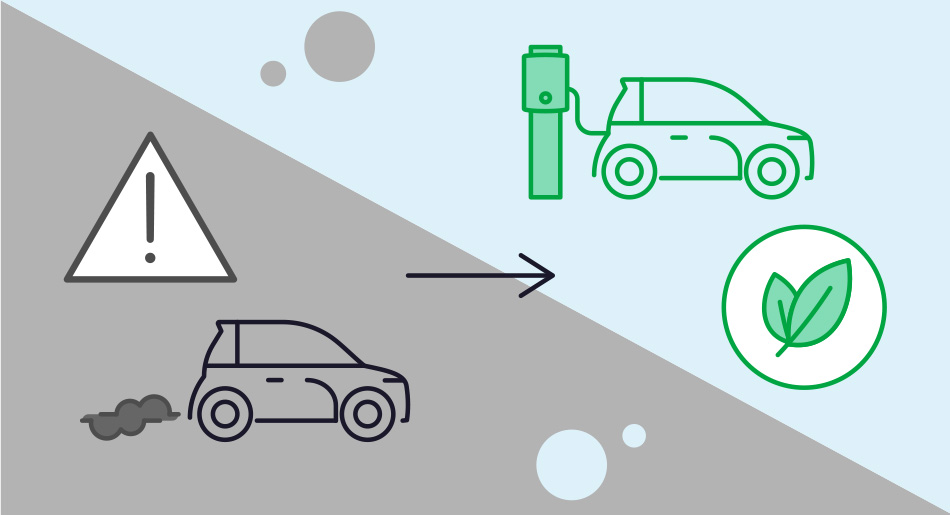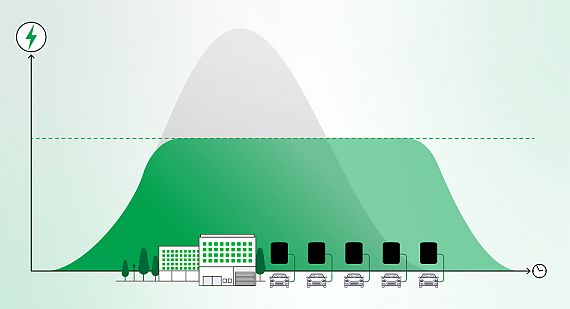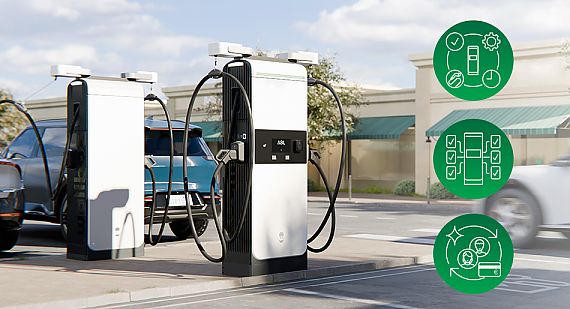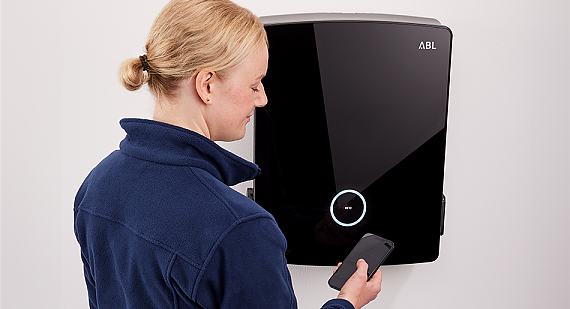
What role does eMobility play in the energy and mobility transition?
And why is the switch to eMobility worthwhile for all of us?
"Transforming the transport sector is crucial for the success of the clean-energy transition." - With this statement, the Agora Verkehrswende initiative emphasises the role the transport sector plays in achieving Germany's climate policy goals. Taking a look at official figures confirms this: According to the German Federal Environment Agency, the transport sector accounted for around 19.8% of greenhouse gas emissions in Germany in 2022. The fact that the transport sector accounts for such a large proportion of total emissions is both a challenge and an opportunity. If emissions in this sector remain high, Germany will continue to exceed the targets set out in the Federal Climate Protection Act. If the mobility transition towards a climate-friendly transport infrastructure is successful, the positive effects will be all the greater. What role does eMobility play in this?
The advantages of electric motors
Electric vehicles are the means of transport of the future, especially in road transport. But what are the reasons for this? After all, in addition to electric drives, capacities are also being invested in the development and research of other alternative fuels. These include e-fuels and biofuels, for example. Arguments in favour of electric driving include the high efficiency of electric motors. At 64%, it is significantly higher than that of cars with petrol and diesel engines. Energy recovery during braking (EV recuperation) and emission-free driving are also advantages. The counterarguments of high energy consumption during production and high purchase costs can be refuted if one considers that the carbon footprint generated during production is relativised with the length of use and in relation to the entire life cycle of the vehicle. The development of electric cars in the more affordable price segment is in full swing. This will make electric driving more accessible to society in the future. Hydrogen vehicles, which generally use hydrogen as an energy source to drive an electric motor, also score points with the advantages of an electric motor. In contrast to battery-powered vehicles, however, the overall efficiency of energy generation, storage and supply for the electric motor is significantly lower. In addition, it will not be possible to produce green hydrogen in the quantities required for mobility in the foreseeable future.
Trending topics in eMobility
Battery-powered cars will characterise our streetscape from 2035 when the production of combustion engines is banned. The fact that electric driving is no longer in its infancy is also clear from the emergence and further development of new, pioneering technologies in the eMobility sector. Trending topics include bidirectional charging with its subtypes vehicle-to-grid (V2G), vehicle-to-home (V2H) and vehicle-to-device (V2D). When charging in two directions, the car battery thus serves as a medium for feeding electricity back into the public grid; as an energy storage device that can supply the home with electricity when required or as a charging option for external technical devices. However, there is still some way to go before this technology is rolled out across the board: The ISO15118-20 standard has created a legal basis for communication - but successful implementation depends on correspondingly bidirectionally capable software and hardware that communicate smoothly with each other. Another innovative communication standard is Plug & Charge, which is also part of the ISO 15118 standard. The batteries in electric cars are also relevant to the further development of electromobility and making it more sustainable. The principle: batteries used in cars are utilised as stationary energy storage units for surplus electricity, e.g. from PV systems (so-called Second Life). Positive side effects are the stabilisation and security of supply of the power grid and a longer life cycle of the battery.
Driving electrically makes sense
The fact that electromobility plays a decisive role in the energy and mobility transition is particularly clear from the fact that the corresponding political course has been set both in Germany and throughout the EU. In order to establish battery-powered driving across the board, the AFIR regulation, for example, facilitates the charging and payment process for users. The expansion of capacities to further develop eMobility and integrate it into an overall ecosystem of various technological innovations and components underlines the success to date and is groundbreaking for the ramp-up of electromobility. The recipe for success is a combination of political guidelines and a change in the minds of road users. As a manufacturer of charging infrastructure, it is our mission to develop products that drive this change and get users excited about eMobility.



